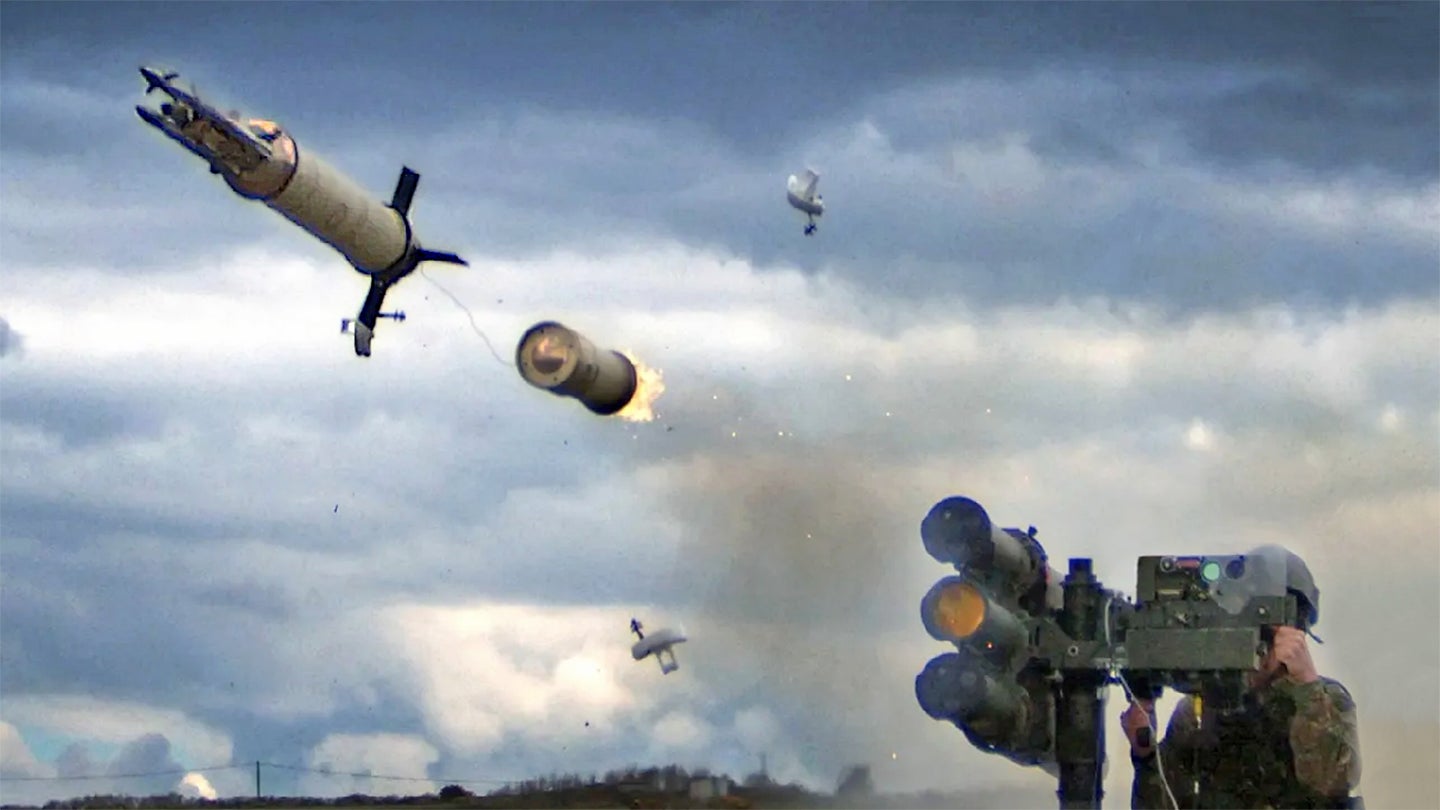Ukraine is poised to introduce a new ground-based air defense system to its war against Russia’s invasion forces, with the announcement that the British-supplied Starstreak man-portable air defense system, or MANPADS, is “ready to be used imminently.” Once fielded in combat, the Starstreak will be the latest addition to a growing armory of similar systems used by the Ukrainian Armed Forces, which we examined in detail in this past feature. However, Starstreak — also known as the High-Velocity Missile (HVM) — incorporates several unique features for a weapon of its class and merits further examination.
News that the Starstreak was about to be deployed by Ukraine was provided yesterday by U.K. Defense Secretary Ben Wallace, interviewed by The Mail on Sunday. Wallace confirmed that the first Ukrainian troops had been trained on the system, which was now in their hands, and that the United Kingdom was meanwhile “doing more than pretty much anyone else” to help Ukraine’s efforts to defeat the invasion forces.
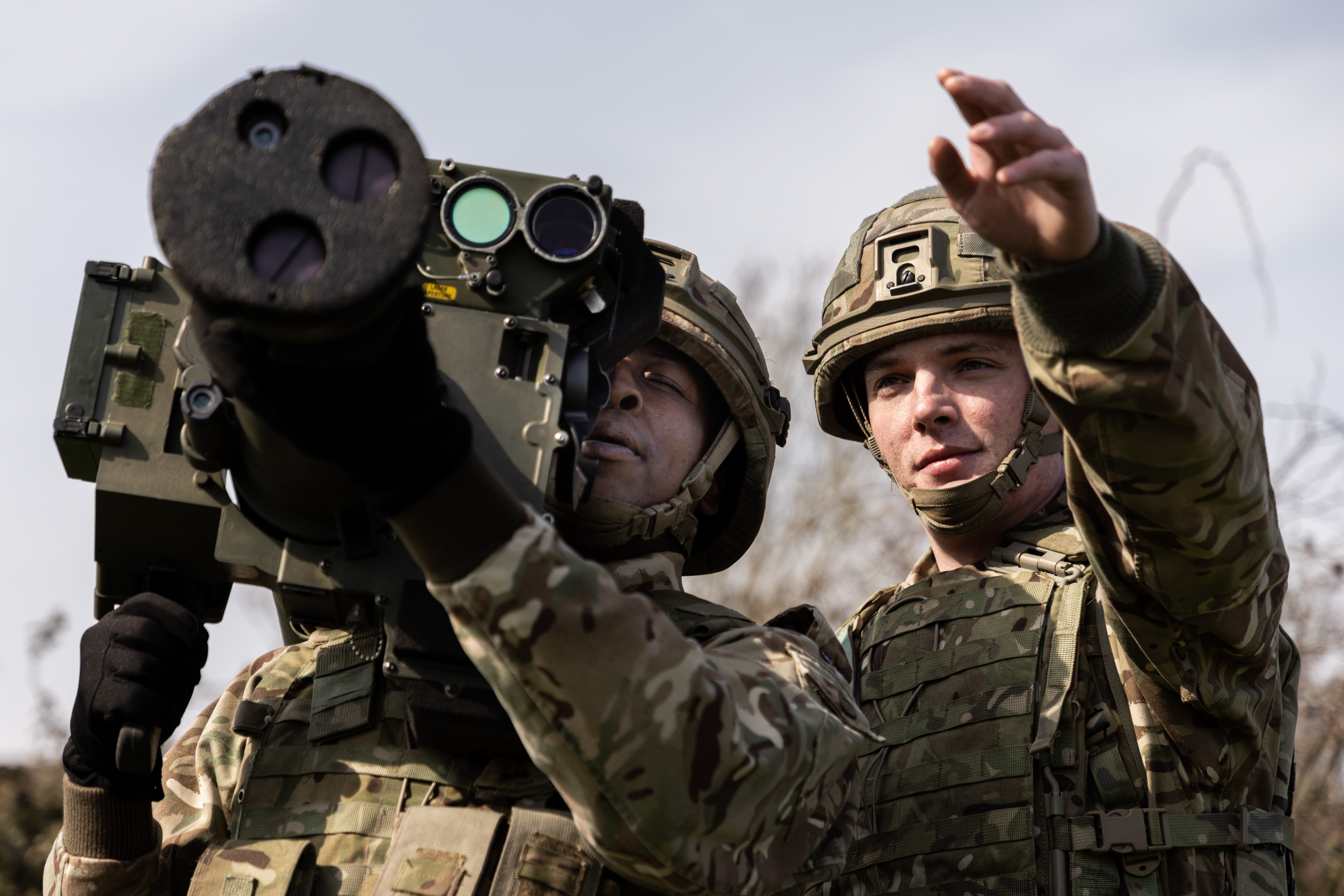
It emerged earlier this month that the United Kingdom was going to provide Ukraine with an undisclosed number of Starstreaks, when the British Army’s Col. Graham Taylor, the commander of 7 Air Defense Group, declared that British troops were being deployed to a secret location somewhere in Eastern Europe to teach Ukrainians how to operate the MANPADS. The captions to photos released by the U.K. Ministry of Defense suggest that the location was in Poland. Col. Taylor noted at the time that the missile has the ability to cause “catastrophic” damage to low-flying enemy fighter jets and helicopters, in particular, which have been the main Russian Aerospace Forces assets used in the conflict so far.
The Starstreak missile is designed to be launched from land, sea, or air platforms, although in practice only land-based versions have been fielded operationally. On land, the missiles can be launched from the shoulder, in traditional MANPADS style, they can be integrated within portable stand-type Lightweight Multiple Launchers (LML) that carry three ready-to-fire rounds, which can be mounted on light vehicles. They can also be provided as box-type launchers for integration on armored vehicles.
In use with the British Army since 1997, this service employs crew-served versions of the weapons, as well as mounting the missiles on Stormer tracked armored vehicles. The Stormer has eight ready-to-fire rounds, 12 reloads, and a roof-mounted targeting package including an infrared sensor.
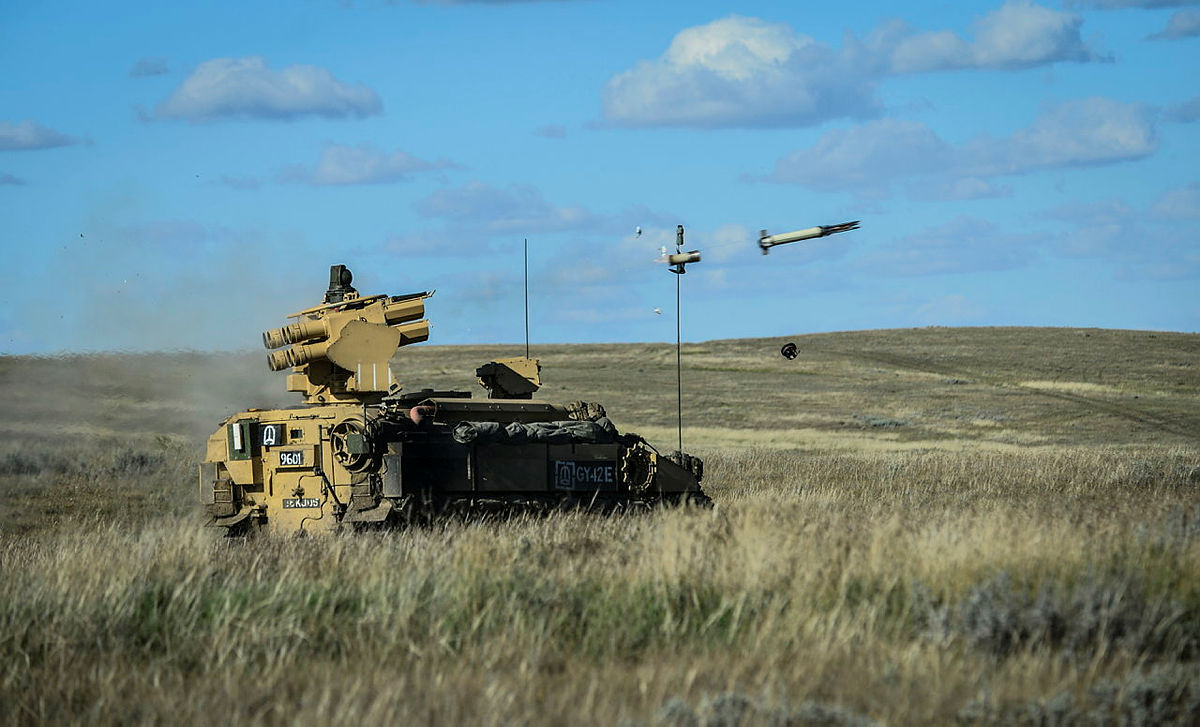
While the British Army has stated that only the individual shoulder-launcher variant has been provided to Ukraine, The Times reports that both shoulder-launcher and LML types have been supplied. Either way, both offer characteristics of lightweight and portability that make them suitable for use in urban environments, too.
The first key to Starstreak’s capability is its guidance system. Most MANPADS fire heat-seeking missiles — first, the missile’s infrared seeker head needs to become locked onto the target’s heat signature, before it’s launched and then autonomously homes in on it, in a ‘fire and forget’ mode. Depending on the age of the missile, certain heat-seeking MANPADS will also require some time for the seeker to cool down before it can lock on.

In contrast, the Starstreak uses laser-beam-riding guidance, in which the operator fires the missile as soon as a target is detected in the optically stabilized sight. Line-of-sight is then maintained throughout the engagement process. The aiming unit projects two laser beams onto the target, with sensors on the missile calculating the relative positions until impact. The intensity of these laser beams is low enough that, the manufacturer claims, the targeted aircraft won’t be able to detect them.
Overall, this guidance method is more accurate than traditional laser guidance, in which the target is ‘painted’ with a single beam. The twin-laser approach is more resistant to maneuvering targets that could otherwise break the laser lock. At the same time, unlike infrared-guided MANPADS, the Starstreak cannot be spoofed by flares or other heat sources. Unlike most air defense missiles, it’s effectively immune to countermeasures, including the latest L-370 Vitebsk (exported as the President-S) directional infrared countermeasures (DIRCM) found on many Russian Aerospace Forces helicopters.
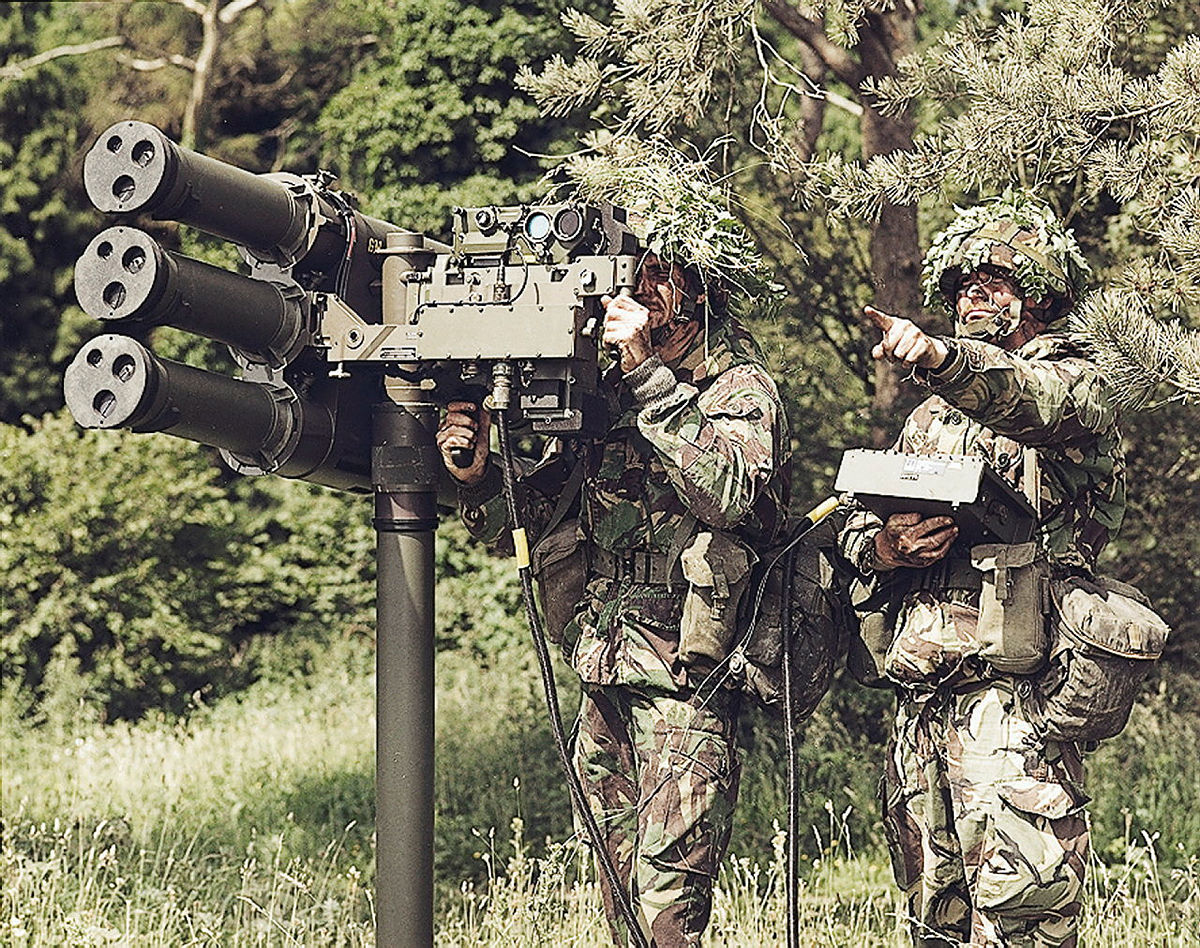
Another advantage is that smaller targets can be engaged (as long as the operator can see them through the sight), including those with infrared signatures that might be insufficient for a heat-seeking missile to track.
In another break from MANPADS tradition, it’s not a single missile with a traditional warhead that’s guided onto or very near the target before detonating. Instead, three tungsten darts are released from the missile body, which contains the rocket motor, during the end-game terminal portion of the attack on the target.
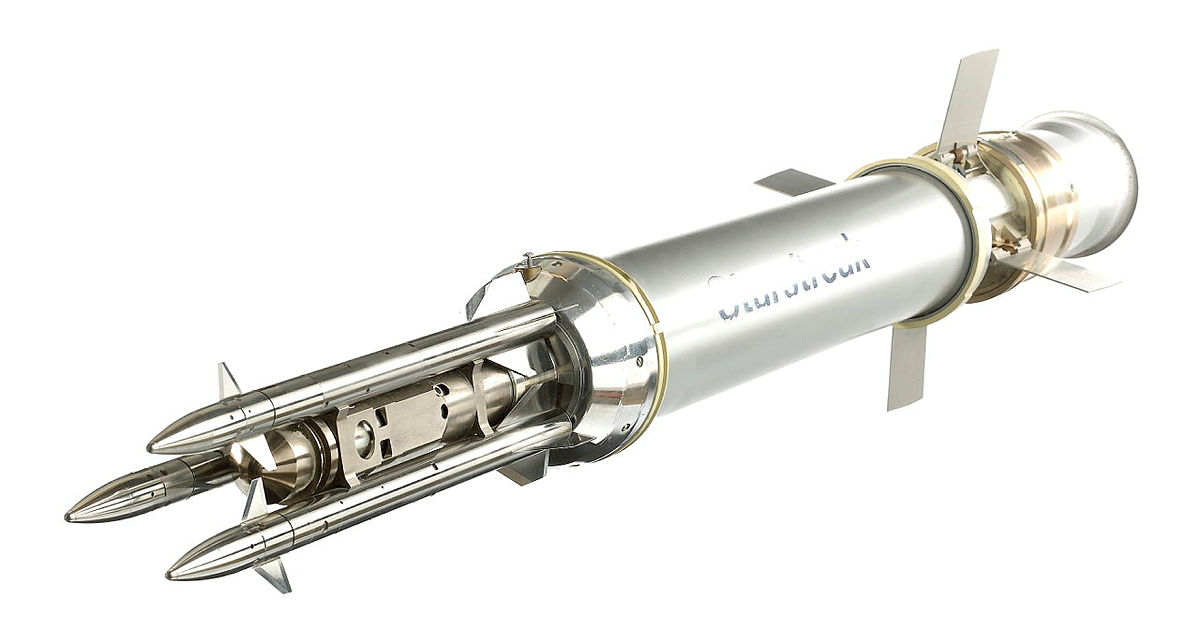
The velocity of these darts, also known as ‘hittiles,’ is such that the Starstreak can destroy not only targets in the air also heavily armored targets on the ground if the need arises. The darts have small control surfaces at the front to ensure they are steered into the target, via the projected laser matrix. They fly in ‘formation’ with a separation of around 5 feet.

The speed with which the missile itself then closes in on the target — up to 2,000 mph — gives it little chance of escape within a very brief engagement window, or ‘unmasking time.’ “Anything traveling at Mach 2.5 kinetically is going to have some serious impact,” Col. Taylor told The Times during a firepower demonstration in the United Kingdom. (The missile’s manufacturer, Thales UK, puts the Starstreak’s top speed at more than Mach 3).
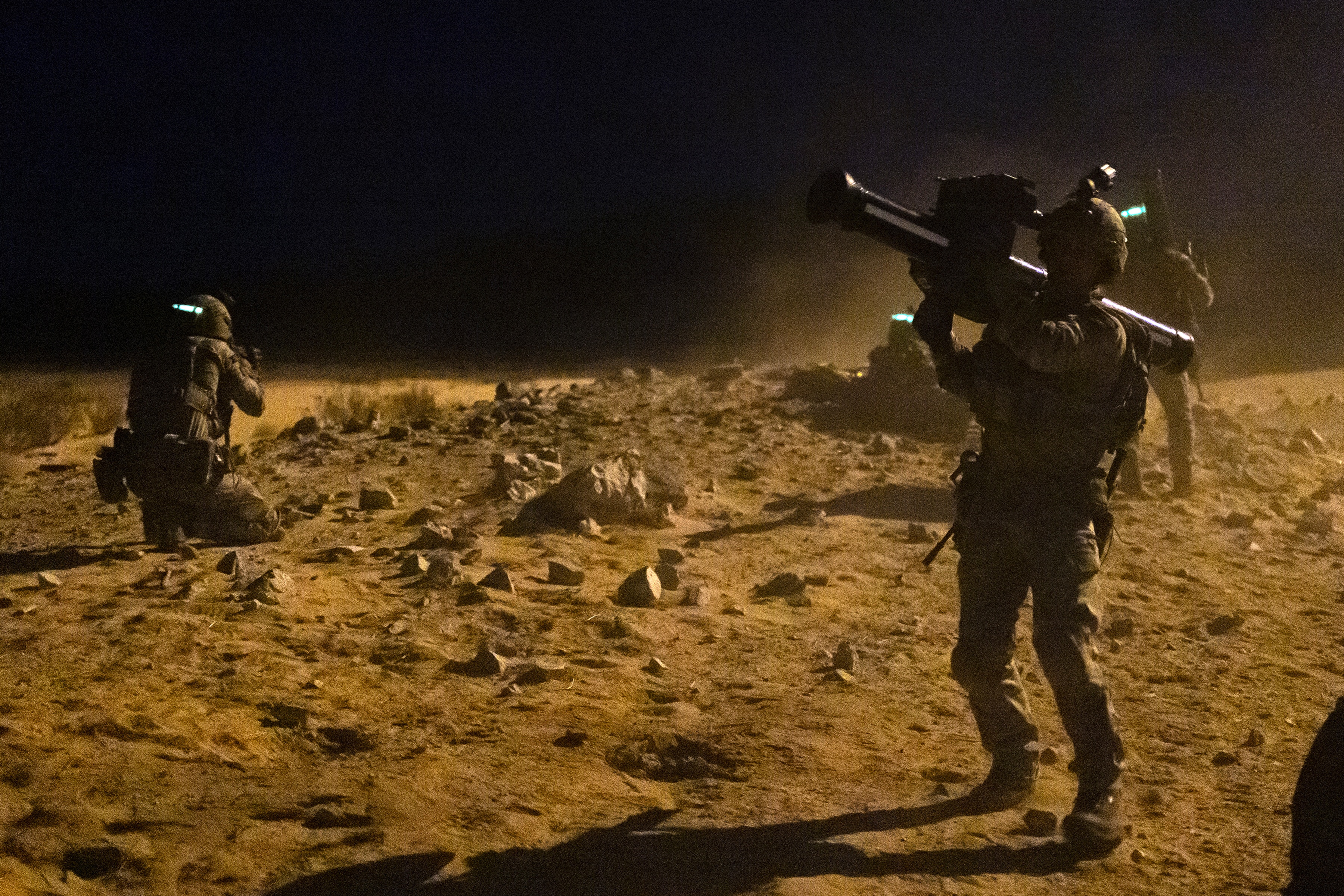
Regardless, the Starstreak has ‘end-game’ speed in excess of typical MANPADS, like Russia’s prolific Strela family or the American FIM-92 Stinger, the latter of which has a typical maximum speed of around Mach 2.2.
Once they have penetrated the target, the darts also explode, each one carrying a fragmentation warhead. This approach is also said to reduce the risk of collateral damage, a consideration when using the weapon against ground targets.
As mentioned above, the types of targets the Starstreak was designed to defeat include lower-flying fixed-wing fighters and late unmasking helicopter targets — pop-up threats that offer little time to successfully engage. At the same time, the missile was tailored to have a longer range than comparable MANPADS, being able to hit targets out to 3.4 miles or more, a little longer than the 3 miles for the Stinger.

All in all, the capabilities of the Starstreak do mean that it stands out among the very many MANPADS types now available. The missile may well also have a significant psychological effect on the pilots that face it. Ukrainian air defenses have already exacted a heavy toll on the Russian Aerospace Forces.
The prospect of a missile that cannot be countered by traditional means may well be an especially alarming one. As Thales states, “The unique characteristics and the exceptional speed of Starstreak pose a significant challenge to adversary pilots who are unlikely to have sufficient time to react once an engagement begins. This, in conjunction with the inability to jam the missile, has a huge impact on the human consciousness of pilots and a highly disruptive effect on mission planning and execution.”
Whether that plays out or not is questionable, but there is no shortage of reports suggesting that the invading Russian forces, in general, are suffering from low morale.

The provision of the Starstreak is also indicative of the relative merits of supplying Ukraine with advanced and unfamiliar weapons systems, a topic we have discussed at length in the recent past. In contrast with Soviet-era air defense equipment, Ukrainian operators required intensive training on the Starstreak before they were able to declare it ready for combat. As Ukraine pushes for more arms from NATO and other allies, the question of the sophistication of certain weapons systems, and the training required to use them becomes more pressing. Indeed, despite signing off on the transfer of the Starstreak, U.K. Defense Secretary Ben Wallace noted that “the real focus of effort has to be helping the Ukrainians either refurbish or locate Russian or Soviet equipment that is already in their inventory.”
However, with the invasion forces becoming steadily more bogged down, and with questions over the scope of the Kremlin’s campaign, there are also already signs of increasingly desperate tactics employed by the Russian Aerospace Forces to counter Ukraine’s existing air defenses. Adding Starstreak onto the battlefield will only make this an even more hazardous operating environment for Russian airpower.
Author’s note: An earlier version of this story credited the Starstreak with an engagement ceiling of 3,280 feet, or 1,000 meters, a figure that comes directly from the British Army website, but which should have been removed before publishing. It is generally thought the Starstreak can reach a more typical MANPADS ceiling, somewhere between 10,000 and 15,000 feet, although we are now looking for a definitive figure and we will update when we find out more.
Contact the author: thomas@thedrive.com
